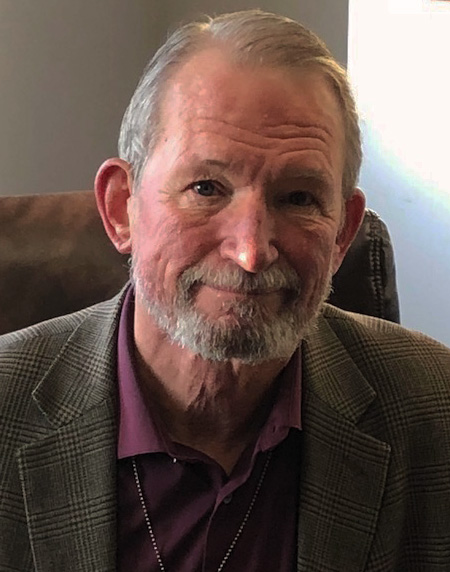James Butler retires

Dr. James Butler, Director of NOAA’s Global Monitoring Laboratory (GML), retired on December 31, 2021 after 35+ years of service to NOAA and the global scientific community.
Building upon the many years of dedication and groundbreaking work of his predecessors, at least three major scientific achievements of global significance have come about through Dr. James Butler’s leadership of GML and immense contributions during his tenure:
- The expansion and maintenance of the NOAA GML global air flask sampling network, which is recognized by the United Nations World Meteorological Organization (WMO) and all national atmospheric measurement programs as being the global standard of such programs.
- The WMO designation of the NOAA Central Calibration Laboratory as the world standard laboratory for carbon dioxide, methane, nitrous oxide, sulfur hexafluoride, and carbon monoxide, built on years of painstaking dedication to detail, understanding that the highest quality data enables the greatest and most prominent impacts and applications.
- The continued recognition of NOAA GML as having the longest continuous and most rigorously calibrated greenhouse gas records on Earth. With many of the world’s major economies pledging to reduce greenhouse gas emissions, GML is in a well-earned position as a leader in the global measurement of background concentrations of greenhouse gases and by de facto, an “honest broker” or impartial mediator, to judge the overall effectiveness of efforts to mitigate the continued accumulation of these gases in the atmosphere and the resulting climate change.
Throughout his career, Dr. Butler made tremendous contributions to our understanding of atmospheric trace gases that exist in small amounts, e.g., chlorofluorocarbons, causing ozone-layer depletion. As a chemical oceanographer, he led research cruises and publications that reset scientists’ understanding of natural versus human controls on atmospheric abundances of methyl bromide, methyl chloroform, and carbon tetrachloride. This work was critical for supporting international efforts to save the ozone layer.
Dr. Butler led the effort that enabled measurements of ozone-depleting substances throughout much of the 20th century, well before these substances were regularly measured or produced industrially. By extracting air trapped in the snowpack at the South Pole, he was able to prove that CFCs weren't naturally produced, and this reaffirmed the importance of limits on human production of CFCs for saving the ozone layer. This methodology has since been used in numerous studies to understand changes in atmospheric chemical composition over much of the 20th century for a wide range of gases.
Dr. Butler was pivotal in the development and maintenance of the NOAA GML global network for measuring levels of gases emitted by humans that were depleting stratospheric ozone. These gases, which include chlorofluorocarbons (CFCs) were subsequently banned in the Montreal Protocol. This network recently detected illicit production of CFC-11 (trichlorofluoromethane) pointing to its sources in southeast Asia. This discovery led members of the Montreal Protocol treaty to call for immediate action, which prompted China to reduce its illegal emissions.
During his NOAA tenure, Dr. Butler accepted assignments in Washington, DC as Staff Scientist in the US Climate Change Program Office (2002-2003) and Acting Director of the NOAA Strategic Planning Office (2003-2005). In 2006, he returned to Boulder where he was appointed Acting Deputy Director for Research and Programs, NOAA Earth Systems Research Laboratory (2006-2007) followed by Director, NOAA GML (2008) where he has led GML to internationally acclaimed recognition. For the last 14 years as GML Director, Dr. Butler propelled GML to a global leadership position in long-term atmospheric measurements.
Dr. Butler has led or been a member of several international Science Advisory Boards. He has supported the multiple WMO Global Atmosphere Watch Programme activities and was instrumental in keeping the Dobson World Calibration Center from collapsing during challenging times. As the chair (2014-2021) of the In-Service Aircraft Global Observing System (IAGOS), he was instrumental in assisting the first U.S. airline (Hawaiian Airlines) to adopt an IAGOS instrument package that measures five gases - carbon dioxide, ozone, methane, water vapor, and carbon monoxide - continuously during flights. This accomplishment demonstrated a transformative opportunity for commercial airlines to collect data on the atmosphere.
Dr. Butler has received numerous awards, including two NOAA Silver Medals for the development of the notable Annual Greenhouse Gas Index (highlighted annually in the Bulletin of the American Meteorological Society’s State of the Climate Report) and for detecting the decline of ozone-destroying chemicals in the atmosphere.
Dr. Butler became a recognized leader in the U.S. Global Change Research Program, serving as co-chair of the Carbon Cycle Interagency Working Group. He was responsible for hosting the Global Monitoring Annual Conference (GMAC) in Boulder, a major international meeting of about 250 long-term atmospheric monitoring scientists that serves as a discussion forum of the latest advances in global monitoring science. In addition, he has been highly dedicated to the education of youth and the public and, throughout his career, has regularly delivered informative, compelling, and inspiring scientific messages to museums, schools, and the media.
Dr. Butler has left a momentous mark on numerous people and enabled scientific advances that affect our global society every day. His scientific and professional achievements have raised NOAA’s stature and trustworthiness and are distinguished in every sense of the word.
